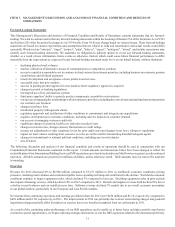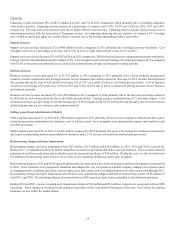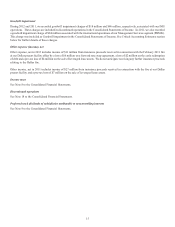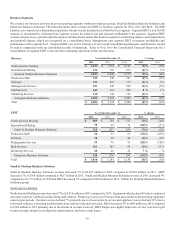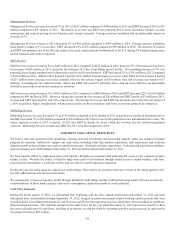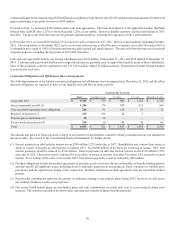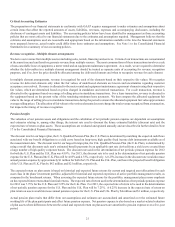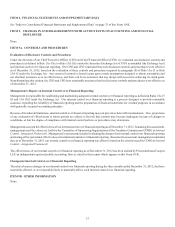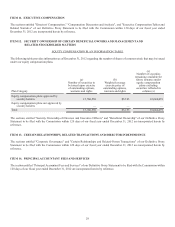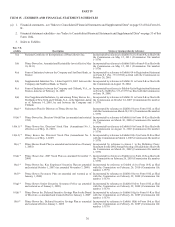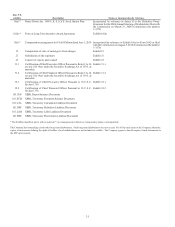Pitney Bowes 2012 Annual Report Download - page 39
Download and view the complete annual report
Please find page 39 of the 2012 Pitney Bowes annual report below. You can navigate through the pages in the report by either clicking on the pages listed below, or by using the keyword search tool below to find specific information within the annual report.21
Critical Accounting Estimates
The preparation of our financial statements in conformity with GAAP requires management to make estimates and assumptions about
certain items that affect the reported amounts of assets, liabilities, revenues, expenses and accompanying disclosures, including the
disclosure of contingent assets and liabilities. The accounting policies below have been identified by management as those accounting
policies that are most critical to our financial statements due to the estimates and assumptions required. Management believes that the
estimates and assumptions used are reasonable and appropriate based on the information available at the time the financial statements
were prepared; however, actual results could differ from those estimates and assumptions. See Note 1 to the Consolidated Financial
Statements for a summary of our accounting policies.
Revenue recognition - Multiple element arrangements
We derive our revenue from multiple sources including sales, rentals, financing and services. Certain of our transactions are consummated
at the same time and can therefore generate revenue from multiple sources. The most common form of these transactions involves a sale
of non-cancelable lease of equipment, a meter rental and an equipment maintenance agreement. As a result, we are required to determine
whether the deliverables in a multiple element arrangement should be treated as separate units of accounting for revenue recognition
purposes, and if so, how the price should be allocated among the delivered elements and when to recognize revenue for each element.
In multiple element arrangements, revenue is recognized for each of the elements based on their respective fair values. We recognize
revenue for delivered elements only when the fair values of undelivered elements are known and uncertainties regarding customer
acceptance are resolved. Revenue is allocated to the meter rental and equipment maintenance agreement elements using their respective
fair values, which are determined based on prices charged in standalone and renewal transactions. For a sale transaction, revenue is
allocated to the equipment based on a range of selling prices in standalone transactions. For a lease transaction, revenue is allocated to
the equipment based on the present value of the remaining minimum lease payments. We then compare the allocated equipment fair
value to the range of selling prices in standalone transactions during the period to ensure the allocated equipment fair value approximates
average selling prices. The allocation of fair values to the various elements does not change the total revenue recognized from a transaction,
but impacts the timing of revenue recognition.
Pension benefits
The valuation of our pension assets and obligations and the calculation of net periodic pension expense are dependent on assumptions
and estimates relating to, among other things, the interest rate used to discount the future estimated liability (discount rate) and the
expected rate of return on plan assets. These assumptions are evaluated and updated annually and are described in further detail in Note
17 to the Consolidated Financial Statements.
The discount rate for our largest plan, the U.S. Qualified Pension Plan (the U.S. Plan) is determined by matching the expected cash flows
associated with our benefit obligations to a yield curve based on long-term, high quality fixed income debt instruments available as of
the measurement date. The discount rate for our largest foreign plan, the U.K. Qualified Pension Plan (the U.K. Plan), is determined by
using a model that discounts each year's estimated benefit payments by an applicable spot rate derived from a yield curve created from
a large number of high quality corporate bonds. The discount rate used in the determination of net periodic pension expense for 2012
for both the U.S. Plan and the U.K. Plan was 4.95%. For 2013, the discount rate to be used in the determination of net periodic pension
expense for the U.S. Plan and the U.K. Plan will be 4.05% and 4.55%, respectively. A 0.25% increase in the discount rate would decrease
annual pension expense by approximately $1 million for both the U.S. Plan and the U.K. Plan, and lower the projected benefit obligation
of the U.S. Plan and U.K. Plan by $42 million and $21 million, respectively.
The expected return on plan assets is based on historical and expected future returns for current and targeted asset allocations for each
asset class in the plans' investment portfolio, adjusted for historical and expected experience of active portfolio management results, as
compared to the benchmark returns. When assessing the expected future returns for the portfolio, management places more emphasis
on the expected future returns than historical returns. The expected rate of return used in the determination of net periodic pension expense
for 2012 was 7.75% for the U.S. Plan and 7.25% for the U.K. Plan. For 2013, the expected rate of return to be used in the determination
of net periodic pension expense for the U.S. Plan and the U.K. Plan will be 7.25%. A 0.25% increase in the expected rate of return on
plan return on assets would decrease annual pension expense for the U.S. Plan and U.K. Plan by $4 million and $1 million, respectively.
Actual pension plan results that differ from our assumptions and estimates are accumulated and amortized over the estimated future
working life of the plan participants and affect future pension expense. Net pension expense is also based on a market-related valuation
of plan assets where differences between the actual and expected return on plan assets are amortized to pension expense over a five-year
period.


